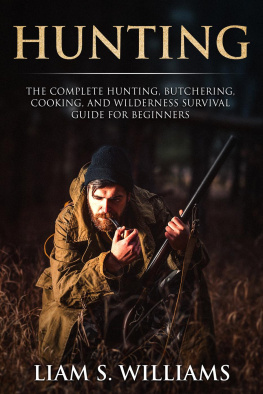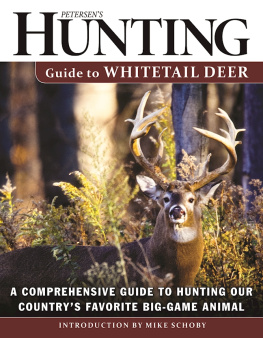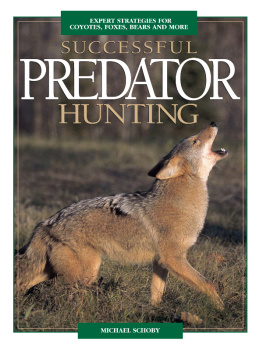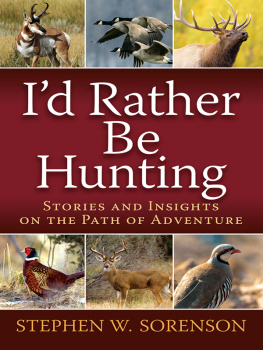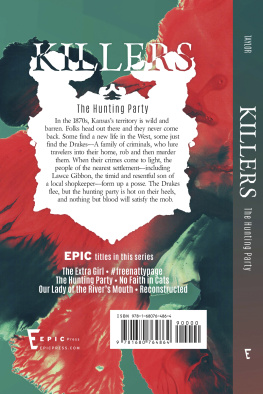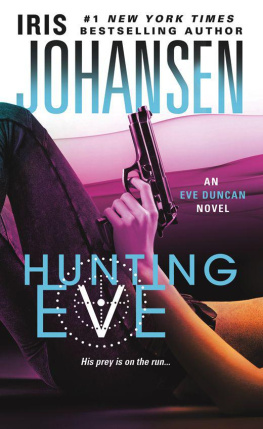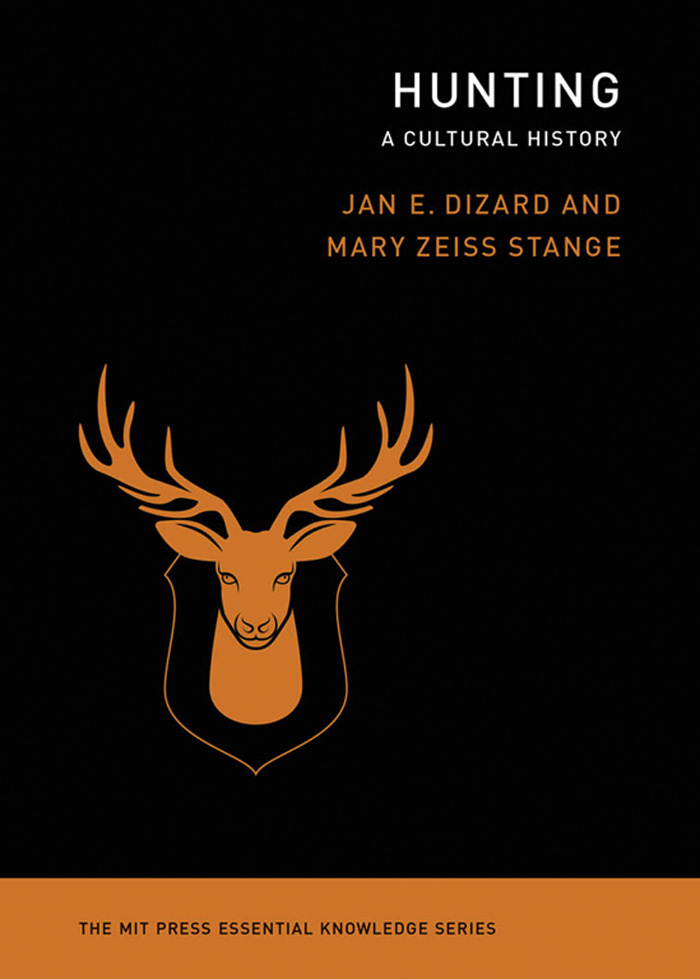
Hunting
The MIT Press Essential Knowledge Series
A complete list of books in this series can be found online at https://mitpress.mit.edu/books/series/mit-press-essential-knowledge-series.
Hunting
A Cultural History
Jan E. Dizard and Mary Zeiss Stange
The MIT Press | Cambridge, Massachusetts | London, England
2022 Massachusetts Institute of Technology
All rights reserved. No part of this book may be reproduced in any form by any electronic or mechanical means (including photocopying, recording, or information storage and retrieval) without permission in writing from the publisher.
The MIT Press would like to thank the anonymous peer reviewers who provided comments on drafts of this book. The generous work of academic experts is essential for establishing the authority and quality of our publications. We acknowledge with gratitude the contributions of these otherwise uncredited readers.
This book was set in Chaparral Pro by New Best-set Typesetters Ltd.
Library of Congress Cataloging-in-Publication Data
Names: Dizard, Jan E., 1940- author. | Stange, Mary Zeiss, author.
Title: Hunting : a cultural history / Jan E. Dizard and Mary Zeiss Stange.
Description: Cambridge, Massachusetts : The MIT Press, [2022] | Series: The MIT Press Essential Knowledge Series | Includes bibliographical references and index.
Identifiers: LCCN 2021051213 | ISBN 9780262543293 (Paperback)
Subjects: LCSH: Hunting.
Classification: LCC GT5810 .D59 2022 | DDC 306.4/83dc23/eng/20211022
LC record available at https://lccn.loc.gov/2021051213
10 9 8 7 6 5 4 3 2 1
d_r0
Contents
Series Foreword
The MIT Press Essential Knowledge series offers accessible, concise, beautifully produced pocket-size books on topics of current interest. Written by leading thinkers, the books in this series deliver expert overviews of subjects that range from the cultural and the historical to the scientific and the technical.
In todays era of instant information gratification, we have ready access to opinions, rationalizations, and superficial descriptions. Much harder to come by is the foundational knowledge that informs a principled understanding of the world. Essential Knowledge books fill that need. Synthesizing specialized subject matter for nonspecialists and engaging critical topics through fundamentals, each of these compact volumes offers readers a point of access to complex ideas.
1
Man, the Hunter?
We begin this story of hunting with an image. Its a picture worth at least a thousand words. We have all likely seen some version of it, and we know (or at least we think we do) the story behind it. A series of figures process across the otherwise vacant page. First in line, and by implication first in time, is a knuckle-walking apelike creature, suggesting something between a chimp and baboon. Next comes a hairy, slope-shouldered prehominid, empty-handed and likely empty-headed, but managing to get along on two feet and apparently aware of his surroundings. The next figure, his successor, has evolved sufficiently to have a name, Homo erectus, and he looks to be a missing link of sorts; fully erect, but still apelike, he is naked, and his hands are empty. There may or may not be a few extras thrown into the parade at this point, but the visual emphasis now shifts to the final two figures, both of them human. One is an erect, fur-clad Neanderthal, clutching a club or stone axe, yet with a look of bewilderment that clearly indicates he is too dim-witted to survive for long in this complicated world he has inherited. But then finally, one might well say triumphantly, our primitive human is overtaken by a more recognizably human model. This is the man whose physique is well muscled, and his attention is focused sharply ahead. Brandishing a flint-tipped spear, he radiates leadership potential. This man strides confidently off the page and into the future. This is Homo sapiens sapiens. And he, in a word, is us.
Or so the story once went, buttressed by invoking naturalist Charles Darwins evolutionary theory, though its unlikely Darwin would have endorsed so linear a model. These little pictographs, which still grace a fair share of high school biology texts, generally bear a title such as The Ascent of Man or The Evolution of Man. And by the mid-twentieth century, the version of human evolution they represented was held to be powerfully supported by developments in the field of anthropologycultural advances to which hunting seemed to contribute. We humans had been hunting for as long as we had been humansthat much was clear and reasonably well supported by the anthropological evidence.
But did hunting make us human? In the postWorld War II, Cold War heyday of what came to be called the hunting hypothesis of human origins, the answer seemed obviously yes. The line of reasoning was elegant in its simplicity. In our earlier evolutional history, our protoprimate predecessors spent the bulk of their time hanging out in trees, swinging from limb to limb, and snacking on fruits, nuts, and berries. Those ancestors eventually descended from the trees and learned to forage for a widening menu of culinary choices. Along the way, they became killer apes and developed bipedalism, which allowed them to venture ever farther out and about in their green world. With upright posture came far better visual acuity, and along with that the ability to think and act in spatial terms, plan and act cooperatively, communicate both verbally and via sign language, and invent as well as create tools and weapons of various kinds. All of these behaviors that characterized early human social and cultural activity, it was held, derived from hunting. Moreover, the hunting hypothesis also explained the physiological and putative emotional differences between men and women.
Did hunting make us human?
Subsequent research and countertheorizing, however, rendered highly porous the argument that it was the complex of behaviors associated with huntingmore specifically, male huntingthat set the course of human evolution in the direction of Homo sapiens sapiens roughly two hundred thousand years ago. Anthropologists Richard Lee and Irven DeVore, whose massively influential anthology, aptly titled Man the Hunter, became something of a guidebook to the hunting hypothesis, acknowledged that their female colleagues raised some valid questions regarding the relative invisibility of women in the theory undergirding the hunting hypothesis.
Yet for themand their colleagues who popularized the theoryin cross-cultural terms, hunting was so obviously and overwhelmingly a male activity that there was little real point in spending time, let alone research dollars, on questions relating to what the women might have been doing with their time and energy while the men were out bonding in the brush. Lee and DeVore granted that in evolutionary terms, it was likely that early woman would not have remained idle during the Pleistocene (a period of roughly 2.5 million years!), but nonetheless they saw little point in exploring whatever women may have been up to, while the male hunting bands were creating ever more efficient weaponry and beating the bush for meat.
This much was clear, though: we could know, for a certainty, that for most of its time on earth up until about ten thousand years ago, humanity lived as hunter-foragers. We also know that the two oldest continuous human cultures on the planetthe Australian Aborigines and the peoples of the southern African desert, variously known as Khoi-San, Damara, and Bushmenare historically hunter-foragers and still have ritual practices that relive that identity. And we know that while we may not be able to decipher all of its symbolism, the first great art our species produced, the cave art of the Upper Paleolithic, represents a recognizablyindeed, startlingly familiarartistic sensibility. As the late paleontologist Stephen Jay Gould remarked about sites like Lascaux in France and Altamira in Spain, we are far closer in time to these Pleistocene painters than they were to those first
Next page

